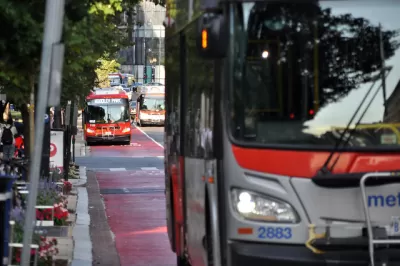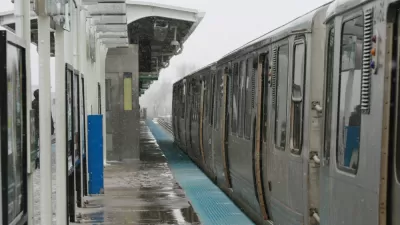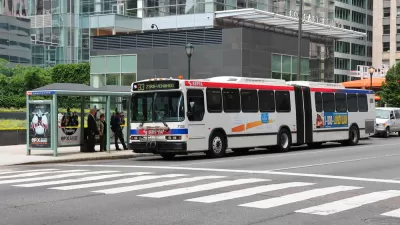The Transit Equity Dashboard reveals a more marked improvement in transit access in the District of Columbia than in other metro areas.

In a piece for Greater Greater Washington, Wyatt Gordon highlights the Washington Metropolitan Area Transit Authority (WMATA)’s successes in expanding services to more parts of the District of Columbia as its ridership steadily grows after pandemic-era drops.
“Some of the most significant boosts in transit access have happened in corners of the region that have needed it the most for decades, including Northern Virginia, Montgomery County, and Southeast DC. TransitCenter’s newly updated Transit Equity Dashboard makes it easy to explore the data behind the region’s ridership recovery, whether you are a policymaking professional, enthused advocate, or a data dilettante,” Gordon adds.
The dashboard can help agencies understand transportation needs in the region and how well existing transit is serving riders in various demographic groups. Hayley Richardson, communications director at TransitCenter, said “DC’s growth in access to opportunity via transit surpasses all other cities we looked at. Ridership on WMATA is bounding back faster than at other agencies which is a testament to the fact that when you put out good service, riders will come.” The results also signal the success of a shift to more frequent all-day service that moves away from focusing on 9-to-5 schedules.
However, “Besides a few pockets, nowhere in the region is public transportation truly competitive with cars. Even in much of the District itself, it takes residents three to five times longer to get their groceries via transit than it would take them by car.”
FULL STORY: Mapping transit equity as the region’s ridership rebounds

Trump Administration Could Effectively End Housing Voucher Program
Federal officials are eyeing major cuts to the Section 8 program that helps millions of low-income households pay rent.

Planetizen Federal Action Tracker
A weekly monitor of how Trump’s orders and actions are impacting planners and planning in America.

Ken Jennings Launches Transit Web Series
The Jeopardy champ wants you to ride public transit.

Washington Legislature Passes Rent Increase Cap
A bill that caps rent increases at 7 percent plus inflation is headed to the governor’s desk.

From Planning to Action: How LA County Is Rethinking Climate Resilience
Chief Sustainability Officer Rita Kampalath outlines the County’s shift from planning to implementation in its climate resilience efforts, emphasizing cross-departmental coordination, updated recovery strategies, and the need for flexible funding.

New Mexico Aging Department Commits to Helping Seniors Age ‘In Place’ and ‘Autonomously’ in New Draft Plan
As New Mexico’s population of seniors continues to grow, the state’s aging department is proposing expanded initiatives to help seniors maintain their autonomy while also supporting family caregivers.
Urban Design for Planners 1: Software Tools
This six-course series explores essential urban design concepts using open source software and equips planners with the tools they need to participate fully in the urban design process.
Planning for Universal Design
Learn the tools for implementing Universal Design in planning regulations.
Heyer Gruel & Associates PA
Ada County Highway District
Institute for Housing and Urban Development Studies (IHS)
City of Grandview
Harvard GSD Executive Education
Toledo-Lucas County Plan Commissions
Salt Lake City
NYU Wagner Graduate School of Public Service





























